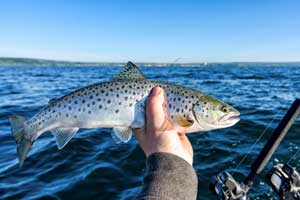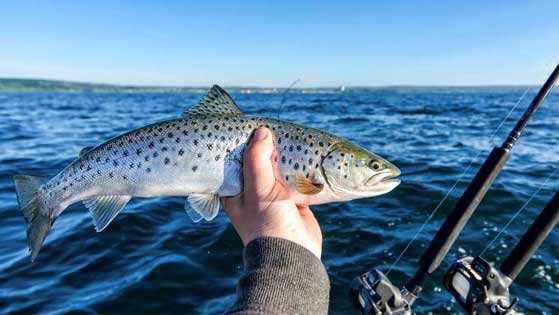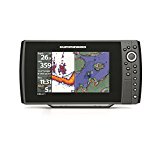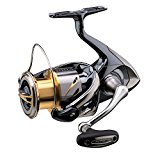Lake Trout Autumn Fishing

As the air begins to cool and the sun starts to set earlier each night water temperatures start to dive with the start of September. Techniques for fall are much the same as used in spring, which we’ll go through.
However there are several big differences that you need to know between the spring and the fall that will have you thinking differently.
Lake Trout are mating in the fall.
Very few fish species mate at this time. Charr is one family of fish that all mate in the fall months usually starting in September and October.
Fall is not the spawning season for the masses of bait fish like it is in the spring. Food is more scarce. Spring has countless species of bait fish spawning within a short period of time, usually within weeks after the ice leaves the lake and water temperature reaches 55°F/13°C.
The insects are not mating combined with bait fish not mating makes fall more difficult and challenging. Compare this with spring that provides a concentration of food in a short period of time.
One week smelt are spawning in mass, the next week it’s Cisco and so on. Sometimes multiple fish species are spawning at the same time. This coupled with all the insects falling in the water from trees bring out predators like Lake Trout to the shallows in mass.
So while fall temperatures are the same as the spring, all other conditions are vastly different. This means that fall requires different techniques.
The Secret for Successful Trout Fishing
For much of the Lake Trout’s distribution, they can be found in the upper 20 feet of water.
*Lake Trout are curious fish. Knowing this will save you wasting time trolling off the bottom when you can be using casting techniques to catch Lake Trout. Appealing to this trait will prove highly successful.
When trolling or casting, be prepared to feel what might seem like little nudges on the line because this is exactly what the Lakers are doing. They are testing the lure by bumping into it and nudging it. When you feel this, don’t jerk hard to set the hook or you’ll lose the laker.
Jerk or pump the rod ever few seconds to give life to the lure. After all you’re trying to imitate a bait fish and a large lake trout is on your tail. How would you respond?
Changing Behavior
It might seem like we’re suggesting that changing the speed is what will cause a laker to strike at a lure or bait – but it’s not. It’s the change in behavior that will cause a Lake Trout to strike.
When trolling with rods and planers, changing the boat speed and direction can often result in a strike.
As the boat gets ready to make changes, be prepared for a strike so as to set the hook and reel in that lunker lake trout you have been searching for.



